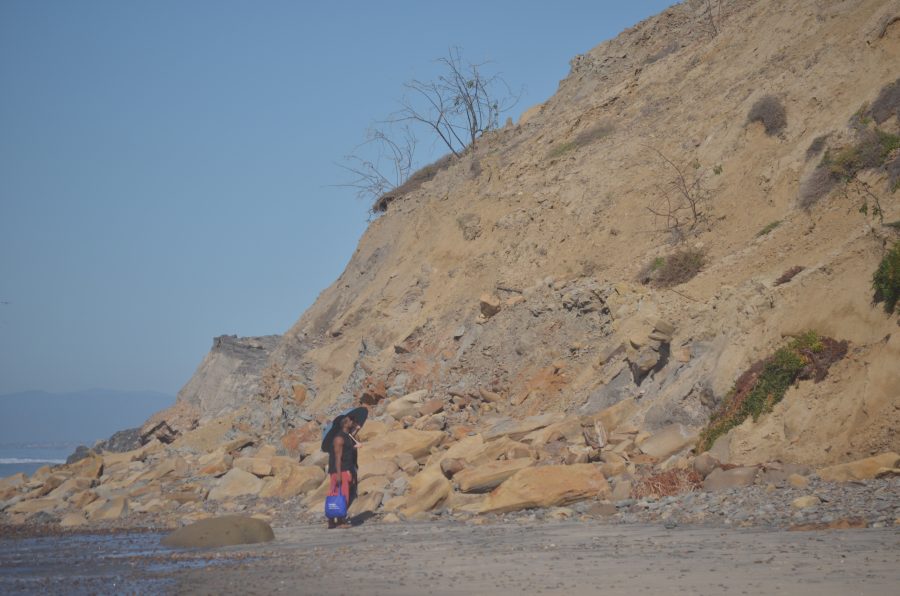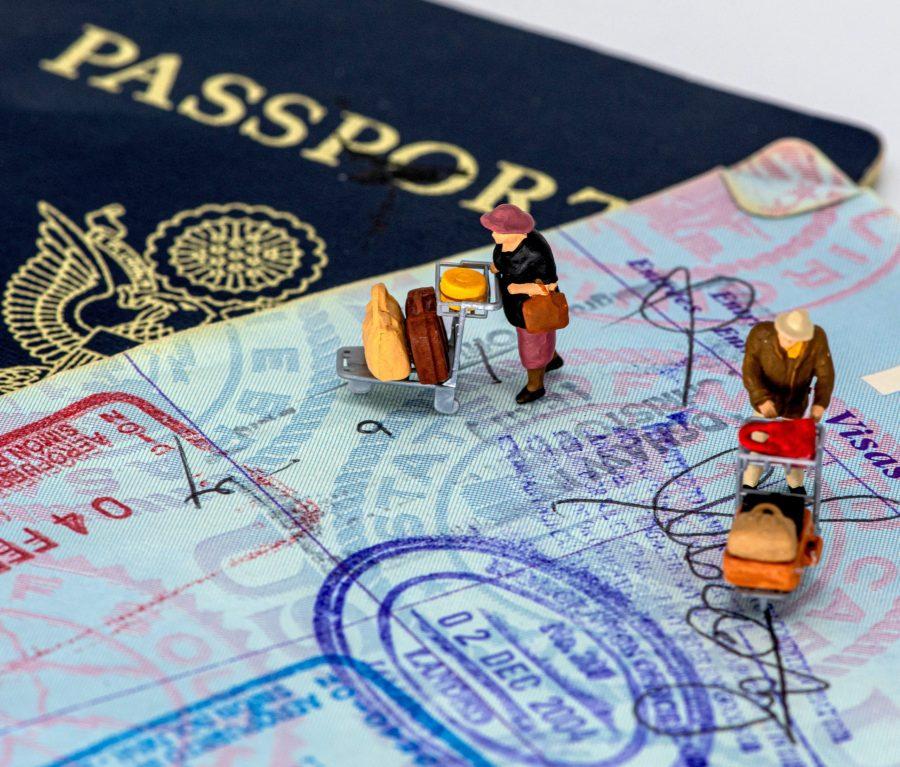For some, the ideal study break would consist of climbing the Great Wall of China, or sipping tea on a balcony in Istanbul. Others want to ditch MTV spring break specials to volunteer in Ecuador.
If it’s a case of wanderlust you suffer from, UCSD’s extensive study abroad program has a long list of options.
“UCSD offers more choices than any other UC,” James Galvin, a director in the Programs Abroad office, said. “We’ve always been recognized as one of the leaders within the Universities of California in the field [of studying abroad].“
For the aspiring jetsetter, the Programs Abroad office, located in the International Center, offers several different programs.
The Education Abroad Program (EAP) is the most popular, spanning 30 countries and 100 universities worldwide, and offers almost every major.
“What students study in EAP are University of California credits.” Galvin said, explaining that the credits are automatically added to a student’s transcript through EAP. “With EAP students who receive financial aid can use state, federal, UCSD institutional aid towards their EAP program.”
The Opportunities Abroad Program (OAP) picks up what EAP misses. As a network of study abroad programs around the world, it offers a larger number of destination options and types of programs, including internship and volunteer opportunities.
OAP credits are considered transfer credits, meaning a student who wants to go to graduate school has to take the extra step of combining and submitting their regular transcript grades and a separate study abroad transcript. OAP also accepts federal and state financial aid, but not UCSD grants.
For a closer, more unique experience, there is also the Global Seminars. The increasingly popular program — which started in 2008 — takes about 15 to 28 students who work closely with a professor for a total of eight weeks, earning eight UC credits while completing rigorous coursework.
“The students make a really strong connection with the UCSD professor who can become a mentor too upon their return to campus and that professor can make letters of recommendation for graduate or professional school,” Galvin said.
Through the PAO, approximately 1300 students study abroad. But as Galvin mentions, students also have the option of Alternative Breaks, a service project that takes students abroad during academic breaks to complete service projects in developing countries, as well as separate departmental programs.
With the PAO’s new model, advisers are taking even greater care to make sure traveling students waste no time in getting their degree.
“Instead of asking the students where do you want to study abroad we will first ask what would you like to study abroad, what academic subjects are your focus when you go abroad,” Galvin said. “We’re really focusing on a tighter integration with our advising and the overall academic mission of the university.”
To make any abroad experience worthwhile, Galvin suggests that students work very closely with the PAO office prior to departure, and even during their trip. A student having issues during their time
abroad can also email, call or even Skype the PAO office to find solutions.
To start your globe-trotting excursion, make sure to visit the PAO office, or the Programs Abroad EXPO 2011, taking place on the Oct. 17 at the International Center.
— Mina Nilchian
Senior Staff Writer
DESTINATIONS
Santiago, Chile
As a study abroad destination, Chile is often overlooked in favor of more touristy Latin American countries (Argentina, Brazil), but don’t be fooled by its relative obscurity: The nation is a gem of colorful culture and the image of a modernizing Latin America.
Chile-bound students will likely opt for the dense capital of Santiago, where over a third of the country’s population resides. City life, like the dizzying speed at which Chileans speak, whizzes by.
However, political turmoil is not absent from the country. The younger generation has been protesting since mid-June for free public education — a policy which had been the norm before the oppressive 17-year dictatorship of General Augusto Pinochet.
I’ve had the unexpected opportunity to study at both the public Universidad de Chile and the private Pontificia Universidad Católica (PUC). The student strikes made it impossible to continue at la Universidad de Chile for the second semester, so I elected to switch. Both experiences were widely different. Bureaucracy is more ordered at PUC, while the students are more socioeconomically diverse in la Universidad de Chile.
And while the country’s ethnically homogeneous demography can sometimes make life as an exchange student a bit trying, it’s interesting to experience the cultural differences. At the beginning, it was hard to navigate the breakneck, slurred español chileno and construct a whole new life, but weeks, then months went by and I found myself spitting colloquial phrases like the rest and running around the
city into the wee hours of the morning.
— Megan Young
Contributing Writer
Barcelona, Spain
World-famous for its hedonism, Barcelona will happily claim your savings, your dignity and likely your heart on a trip abroad. This city isn’t cheap by any measure: hard as you might try to get by on tapas (Spanish appetizers) and liquor store-grade sangria, pricier pastures will always beckon, as there’s no shortage of enticing bars and restaurants. Barcelona gets a bad rap for its pick-pocketers, but exercising common sense should be enough to keep your purse safe.
Classes themselves vary by program (there are three major universities within city limits, and several smaller schools), though you can generally expect smooth sailing. Instructors are mindful of the fact that you haven’t come 7,000 miles from home for another 8 a.m. lecture, and you’ll more often than not have plenty of downtime to explore.
You’ll need it: the list of museums, clubs (excuse me: discotecas), and stunning feats of architectural genius is apparently endless. Highlights include the Miró Museum atop Montjuic, as well as Razzmatazz, an affordable nightclub that’s geared toward a younger, alternative clientele. Whatever you do, don’t just take a few snapshots of Gaudí’s Sagrada Familia and call it a trip: in Barcelona, the “study” is silent in “study abroad.”
— Trevor Cox
Senior Staff Writer
Beijing, China
There are, invariably, three rites of passage for the foreigner who studies abroad in Beijing: getting cheated while haggling, getting diarrhea and getting thousand-year history shoved down your throat.
Don’t get me wrong. Beijing is the cultural capital of China, a global, political and economic powerhouse chock full of cheap, if low-quality, merchandise — but none of these will protect the timid student who cowers in the face of over-persistent saleswomen. Or the coed who couldn’t resist the sizzling street kabobs and ends up in the bathroom for six hours.
But for the student undaunted by extreme weather and overcrowding, Beijing as a study abroad destination offers an affordable, fascinating mix of modern and historical features, and — if you’re into that kind of thing — more culture shock than Western Europe can offer.
Unlike the more metropolitan and Westernized Shanghai, Beijing is famed worldwide for its postcard (or profile pic)-worthy landmarks, from the historical (the centuries-old Forbidden City) and political (Tiananmen Square, home to the 1989 protests) to the religious (Llama and Confucian Temples), architectural (Bird’s Nest stadium) and iconic (Great Wall).
Beijing is downright cheap and international students are usually treated well by their respective in
stitutions. At Beijing Normal University, local students are stuffed four or six to a room, while UC students share doubles with private bathrooms and, most crucial during the humid summer, air conditioning.
Most people come to Beijing specifically to study Mandarin; lucky for them, the professors’ expectations of foreigners are so low that the classes are usually guaranteed easy As. Outside of the classroom, a surprising number of locals and service workers (waiters, etc) are unable to speak English, so there’s plenty of opportunity for practice and hilarious misunderstandings.
Aside from being the seat of government and media, Beijing is also one of the world’s culture headquarters. The student who heads to the Northern City (as the city’s name literally translates) shouldn’t forget to check out the free 798 art district, abundant concerts and, if she’s lucky, the spectacle of locals convening to dance every night under various landmarks.
— Angela Chen
Editor in Chief
Berlin, Germany
Anyone can tell you that Berlin’s one of a kind when it comes to fashion, art and certainly history, but what they might forget to mention is a student’s godsend: it doesn’t get much cheaper on this side of the Atlantic. Two-Euro pizza and two-for-one drinks aren’t a bad place to start, but if you’re planning on extending your stay, 400 Euros a month buys you a one-bedroom apartment in the hippest part of town, Mitte. (Anyone who’s ever trolled Craigslist for a Costa Verde sublet understands the sheer magic of that price point).
As for the classes themselves, be aware that Berlin’s largest college (and EAP partner), the Free University of Berlin, is situated a 30- to 45-minute train ride from the city center. Nevertheless, navigating Berlin — a behemoth of a modern city, at eight times the size of Paris — should prove to be a cinch. Between the subway (U-bahn), above-ground train (S-bahn) and bus systems, a visit to any of the city’s myriad attractions is seldom more than a short ride away. You’ll want to explore by the TV Tower and certainly the East Side Gallery (a colorful memorial to the Berlin Wall). But taking in the nightlife at legendary clubs like Berghain — a converted warehouse that doesn’t let the party stop ‘til well past sunrise — is truly the stuff of study abroad legend.
— Trevor Cox
Senior Staff Writer
Florence, Italy
To Americans, Florence is a gold mine of art history and architecture, a foodie’s wet dream and the perfect starting point for exploring Italia.
To Italians, Florence is the city ruined by tourism.
American students flock there each semester to gawk at Michelangelo’s David, climb to the top of Brunelleschi’s Duomo or admire the gold-threaded Botticelli paintings in the Uffizi. Still others are content to sit on the banks of the Arno eating “authentic” gelato or paninis.
But they do all that in a city almost completely devoid of Italians. The influx of foreigners, and the sky-high cost of living, has driven them all away; the only natives left in the city are restaurant and hostel workers.
But if your heart is set on living in Dante and Da Vinci’s hometown, then do Florence right. The Oltrarno district (across the river) remains an Italian holdout. Take the time to actually visit Florence’s museums and order from a café where the waiters say “ciao” when you walk in the door. And you can’t beat Florence’s central location for exploring the rest of Italy; all the north-south trains go through the capital of Tuscany. You have easy public transport from Firenze to Rome, Venice, Cinque Terre, Bologna and the nature-friendly Tuscan hiking destinations besides.
— Hayley Bisceglia-Martin
Senior Staff Writer







